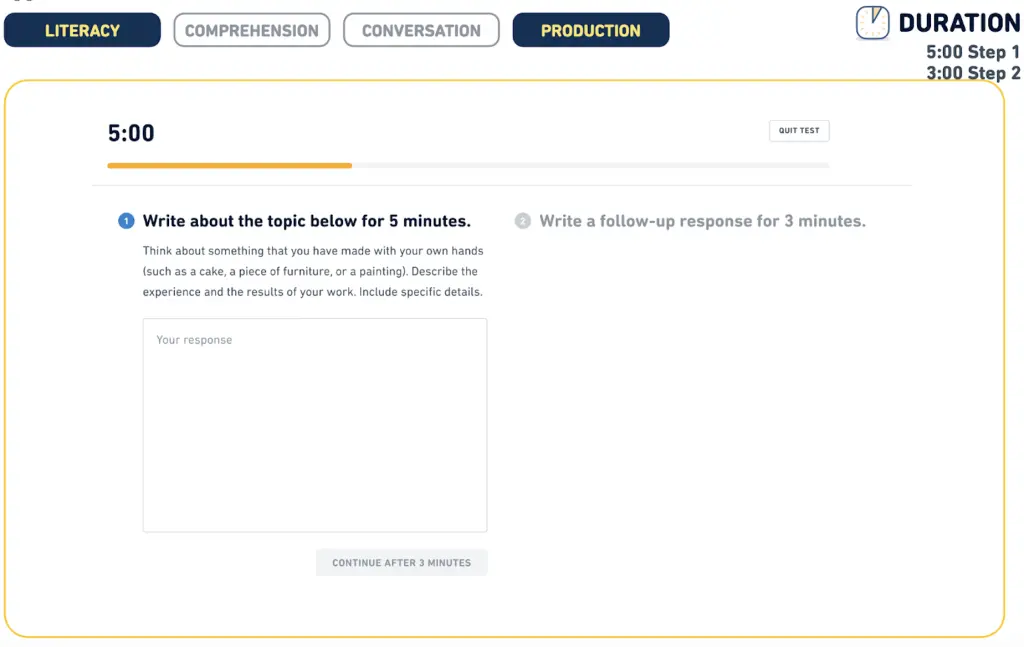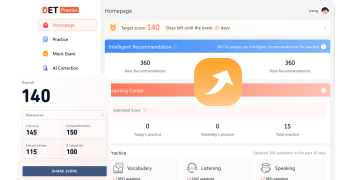Padroneggiare il nuovo tipo di domanda di scrittura interattiva nel Duolingo English Test 2024
Il Duolingo English Test introduce un nuovo tipo di domanda chiamato Scrittura Interattiva nell'aprile 2024. Padroneggiare questo tipo di domanda è cruciale per ottenere un punteggio più alto nella scrittura. In questo post, esploreremo la struttura della domanda di Scrittura Interattiva, le strategie per rispondere efficacemente e ti forniremo modelli e risposte d'esempio per aiutarti a avere successo.
Se vuoi ottenere più modelli e informazioni, puoi guardare il video qui sotto.
Comprendere la Struttura della Domanda di Scrittura Interattiva

La domanda di Scrittura Interattiva consiste in due parti. Per prima cosa, ti verrà dato un suggerimento di scrittura e 5 minuti per comporre la tua risposta. In base alla tua risposta, verrà generato un secondo suggerimento e avrai 3 minuti per continuare a scrivere secondo i requisiti del nuovo suggerimento. L'interfaccia della domanda sarà simile allo screenshot fornito in precedenza.
Tipi di Domande di Scrittura nel Duolingo English Test
Le domande di scrittura nel Duolingo English Test possono essere categorizzate in tre tipi principali:
1. Domande descrittive
2. Domande argomentative (incluse domande basate su opinioni)
3. Domande comparative
Padroneggiando le strutture di scrittura adattate a ciascun tipo di domanda, puoi migliorare significativamente la tua performance nelle sezioni di scrittura.
Strategie per Rispondere alle Domande di Scrittura Interattiva
Analizziamo una domanda e un suggerimento di esempio:
Quando dovrebbero i bambini iniziare a imparare una lingua straniera? Perché? Dai ragioni specifiche per la tua risposta.
Questa è una domanda basata sull'opinione e possiamo utilizzare uno dei due modelli per rispondere efficacemente.
Modello 1:
· Inizia con la tua posizione: “I firmly believe that [la tua posizione]”
· Elabora con una ragione: “One primary reason for this is [le tue ragioni]”
· Fornisci un esempio o una prova: “For instance, [il tuo esempio]”
· Concludi rafforzando la tua posizione: “Therefore, [la tua posizione].”
Modello 2:
· Presenta una visione equilibrata: “While some might argue that [contro-argomento], I believe that [la tua posizione].”
· Giustifica la tua posizione: “This is mainly due to [ragione].”
· Illustra con un esempio: “A notable example is [esempio]”
· Riassumi il tuo argomento: “In conclusion, despite [contro-argomento], I believe that [la tua posizione].”
Utilizzando il Modello 1, una risposta d'esempio potrebbe essere questa:
“I firmly believe that children should begin learning a foreign language as early as possible, ideally before age 5. One primary reason for this is that young children&rsquo






